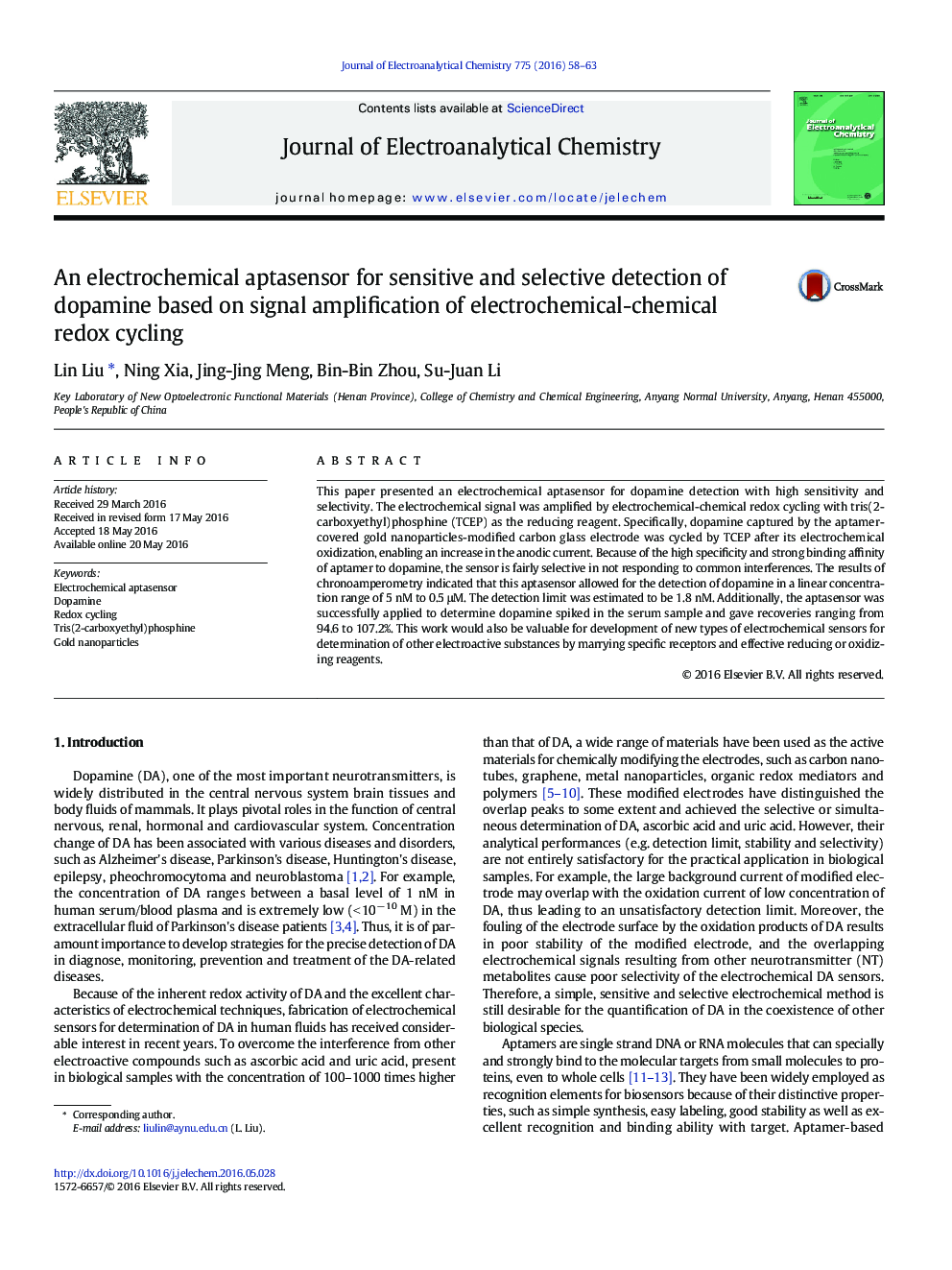| Article ID | Journal | Published Year | Pages | File Type |
|---|---|---|---|---|
| 217826 | Journal of Electroanalytical Chemistry | 2016 | 6 Pages |
•We reported an electrochemical aptasensor for dopamine detection.•The signal was amplified by electrochemical-chemical redox cycling.•Tris(2-carboxyethyl)phosphine was used as the reducing agent to regenerate dopamine.•The linear range is 5 nM–0.5 μM and the detection limit is 1.8 nM.
This paper presented an electrochemical aptasensor for dopamine detection with high sensitivity and selectivity. The electrochemical signal was amplified by electrochemical-chemical redox cycling with tris(2-carboxyethyl)phosphine (TCEP) as the reducing reagent. Specifically, dopamine captured by the aptamer-covered gold nanoparticles-modified carbon glass electrode was cycled by TCEP after its electrochemical oxidization, enabling an increase in the anodic current. Because of the high specificity and strong binding affinity of aptamer to dopamine, the sensor is fairly selective in not responding to common interferences. The results of chronoamperometry indicated that this aptasensor allowed for the detection of dopamine in a linear concentration range of 5 nM to 0.5 μM. The detection limit was estimated to be 1.8 nM. Additionally, the aptasensor was successfully applied to determine dopamine spiked in the serum sample and gave recoveries ranging from 94.6 to 107.2%. This work would also be valuable for development of new types of electrochemical sensors for determination of other electroactive substances by marrying specific receptors and effective reducing or oxidizing reagents.
